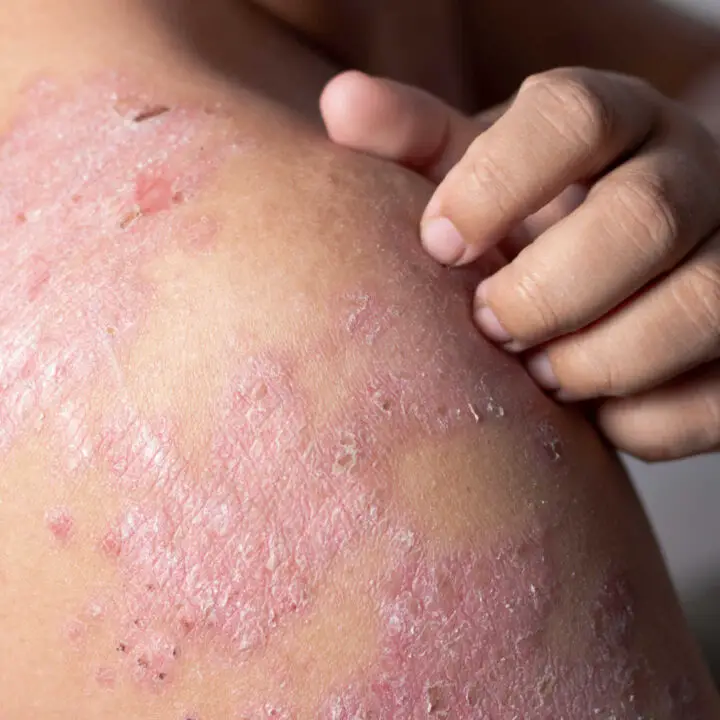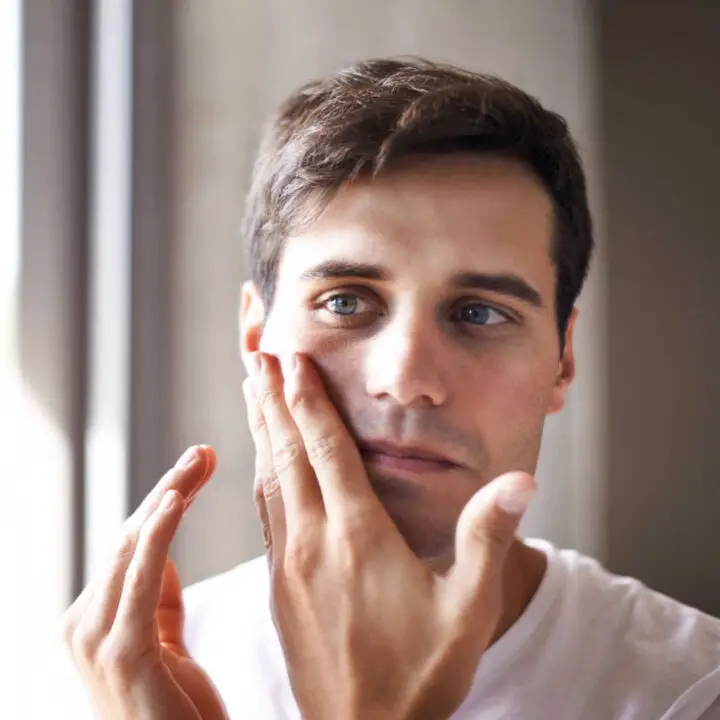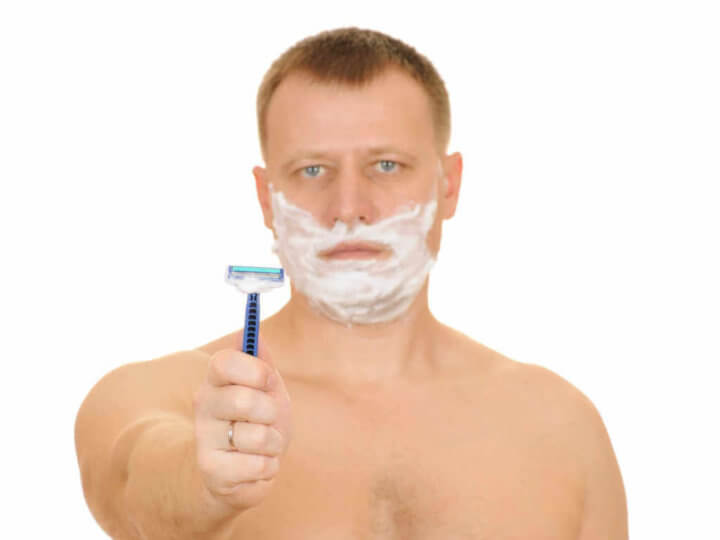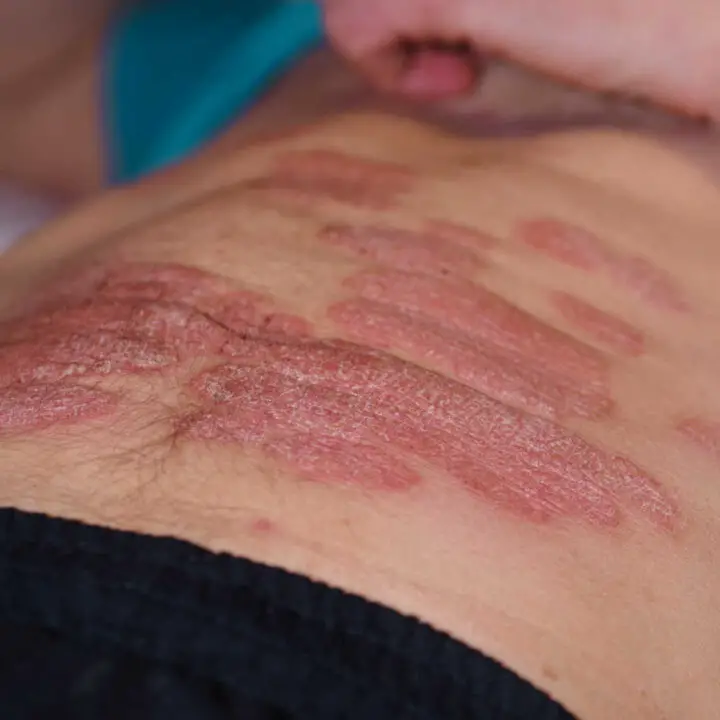
For people living with psoriasis, even routine grooming tasks like shaving can be a challenge. Psoriasis, a chronic skin condition that causes red, scaly, and often itchy patches, varies widely in form and severity, making skincare routines highly individualized. Shaving requires special techniques and careful product selection to minimize irritation and protect the skin.
Techniques for Wet Shaving with Psoriasis
Mastering gentle shaving techniques can be a game changer for those with psoriasis. The goal here is to minimize discomfort while achieving a clean shave. Imagine standing in front of the mirror, breathing easy knowing you’ve equipped yourself with the right methods. Here are some effective general techniques:
- Shave with the Grain: Always shave in the direction of hair growth to reduce tugging and irritation. It might take a little longer, but the results are worth it.
- Use Light Pressure: Avoid pressing the razor too hard against your skin. A light touch is often more effective and significantly reduces the risk of nicks.
- Short Strokes: Keep your shaving strokes short and controlled. This allows for more precision and less stress on sensitive skin.
Shaving Vs. Type Of Psoriasis
The type of psoriasis can make a significant difference when it comes to shaving. Different types of psoriasis affect the skin in unique ways, so shaving techniques and aftercare need to be tailored accordingly. Here’s how each type can influence the approach to shaving:
Plaque Psoriasis
- Characteristics: Plaque psoriasis is marked by raised, red patches covered with silvery scales. These plaques can appear anywhere but are common on areas like the knees, elbows, and scalp.
- Shaving Considerations: It’s best to avoid shaving directly over plaques, as this can damage the skin and worsen inflammation. Shaving around plaques is safer, and using an electric trimmer to avoid direct contact can reduce irritation if shaving is necessary in those areas.
Guttate Psoriasis
- Characteristics: Appears as small, drop-like spots, typically after a bacterial infection like strep throat. It often affects younger individuals and may cover larger areas of the skin.
- Shaving Considerations: Since guttate psoriasis causes many small patches, it may be easier to manage than larger plaques. However, it’s still important to avoid shaving directly over affected areas. Opt for a single-blade razor or an electric trimmer and consider a gentler shaving approach with mild products.
Inverse Psoriasis
- Characteristics: Occurs in skin folds, such as under the arms, in the groin, or under the breasts. These patches are typically smooth, red, and shiny, rather than scaly.
- Shaving Considerations: Shaving in skin folds can be challenging because moisture and friction can worsen irritation. It’s essential to use sharp, clean blades and avoid shaving too closely. Using powder or a mild, unscented aftercare lotion may reduce chafing and friction in these areas.
Pustular Psoriasis
- Characteristics: Pustular psoriasis involves white pustules surrounded by red skin, often on the hands and feet, but it can appear on other parts of the body as well.
- Shaving Considerations: Due to the presence of pustules, shaving over affected areas is not recommended. Shaving can cause significant irritation and potential infection in these sensitive spots. Instead, using clippers or avoiding shaving these areas is generally safer until symptoms subside.
Erythrodermic Psoriasis
- Characteristics: This is a rare and severe form that causes widespread redness and shedding across large areas of the body. It’s often accompanied by intense itching, pain, and increased sensitivity.
- Shaving Considerations: Shaving is typically not recommended for individuals experiencing erythrodermic psoriasis, as the skin is highly sensitive, and shaving can lead to severe discomfort and potential complications. Consulting with a dermatologist before shaving in any affected areas is essential for this type.
By adopting these methods, wet shaving can become a more pleasant experience for those managing psoriasis.

Additional Tips and Tricks
When it comes to shaving with psoriasis, handling sensitive areas requires extra care. These areas, like the neck or around the jawline, are often prone to irritation and flare-ups. However, with a few thoughtful strategies, you can navigate these zones more comfortably.
- Use a Trimmer First: For areas with longer hair, consider trimming before shaving. This reduces the strain on your razor and minimizes tugging on the skin.
- Apply Extra Lather: Ensuring sensitive areas have a thick layer of shaving cream can cushion the skin against razor blades, providing a buffer that reduces discomfort.
- Test Different Razors: Sometimes, a single-blade razor might be gentler on sensitive areas than multi-blades. Experiment to find what works best for your skin.
Taking these precautions can make a significant difference in your shaving experience.
Avoiding Irritation

Addressing potential irritation during shaving is crucial. After all, no one wants to deal with the aftermath of a poor shaving session when living with psoriasis. Here are some strategies to keep irritation at bay:
- Rinse the Blade Frequently: Rinse the razor blade often to remove hair and cream buildup. This prevents clogging and ensures an efficient shave.
- Hydration is Key: Keep the skin well-hydrated before, during, and after shaving. This minimizes dryness and protects the skin barrier.
- Listen to Your Skin: If irritation occurs, it might be best to stop and assess the situation. Sometimes, allowing your skin to recover before shaving again is the best choice.
By focusing on these gentle shaving methods and proactive strategies, anyone managing psoriasis can achieve a smoother shaving experience while keeping irritation in check.
Navigating the wet shaving process requires a thoughtful approach to mitigate these risks and embrace the benefits while caring for sensitive skin.
Wet Shaving With Psoriasis

[Ed. Note: Amazon links are affiliate.]
Selecting appropriate products is crucial when dealing with psoriasis. The wrong choice can lead to flare-ups or irritation. It’s like finding a perfect pair of shoes – they need to be comfortable and suit your specific needs. Consider these product guidelines:
- Shaving Creams: Opt for fragrance-free, moisturizing shaving creams designed for sensitive skin. Ingredients like aloe vera or calendula can be beneficial.
- Razors: Consider a safety razor for more control and less irritation. An adjustable safety razor might be beneficial for those with varying severity of outbreaks. If you are going to use a cartridge razor, choose one with no more than three blades for a smoother glide to reduce friction.
- Post-Shave Balm: Look for alcohol-free, soothing balms with calming ingredients like chamomile or tea tree oil.
With the right preparation and product selection, the experience of wet shaving can transform into a positive ritual rather than a source of stress.
Pre-shave Skincare Routine
When preparing for wet shaving with psoriasis, establishing a pre-shave skincare routine is essential. This step increases comfort and minimizes irritation, allowing for a smoother experience overall. Here’s how to set up an effective pre-shave routine:
- Cleanse Gently: Use a mild, hydrating cleanser (like this one) to remove dirt while keeping your skin barrier intact.
- Exfoliate Carefully: If your skin is not overly sensitive, consider a gentle exfoliant once in a while (maybe a couple times per month). This helps to remove dead skin cells and prevents clogged razors.
- Soften the Skin: A warm shower or a warm towel placed on the face can help soften the hair for shaving.
- Consider a Pre-Shave Oil: Pre-shave oils containing essential oils offer a range of benefits including antimicrobial, anti-inflammatory, aromatherapy, skin healing, moisturizing, and antifungal properties.
Taking these steps ensures that you’re not only prepping your skin for shaving but also taking care of it in the process.
Post-shave Care for Psoriasis Skin
After completing a shave, especially when managing psoriasis, post-shave care is vital. The skin can be more sensitive right after shaving, and neglecting to care for it may lead to irritation or flare-ups. To promote healing and comfort, consider the following tips:
- Apply a Calming Moisturizer: Choose a fragrance-free moisturizer that contains soothing ingredients like shea butter or hyaluronic acid. Applying it right after shaving can lock in moisture and aid recovery.
- Use Cold Compresses: If you notice any redness or irritation, a cold compress can work wonders in soothing the skin and reducing inflammation.
- Avoid Hot Water: Stick to lukewarm water when rinsing your face post-shave, as hot water can exacerbate irritation.
These simple steps provide noticeable relief and create a nourishing environment for the skin.
Impact Of Wet Shaving On Those With Psoriasis
For those with psoriasis, wet shaving can pose unique challenges. While many find it to be a more comfortable and precise method, the sensitive skin associated with psoriasis may lead to complications. The friction and moisture involved in wet shaving can aggravate flare-ups, causing discomfort or even bleeding. Here are some impacts to keep in mind:
- Increased Friction: The razor can irritate already sensitive skin, leading to inflammation.
- Moisture Sensitivity: Excess moisture can sometimes worsen psoriasis, making it imperative to consider the products and techniques used.
Background: Understanding Psoriasis
Psoriasis is a chronic autoimmune condition characterized by the rapid growth of skin cells, leading to red, scaly patches that can be itchy and painful. It affects millions of people worldwide, and its visibility can often result in social discomfort or confidence issues. Imagine someone looking in the mirror and feeling frustrated by the appearance of their skin, knowing that every interaction might invite unwanted questions or judgment. Understanding psoriasis is crucial for anyone dealing with this condition.
There are several types of psoriasis, each with unique characteristics:
- Plaque Psoriasis: The most common type, marked by raised, red patches covered with silvery scales.
- Guttate Psoriasis: Appears as small, drop-like spots and often starts in childhood or young adulthood.
- Inverse Psoriasis: Found in skin folds (like under the arms or in the groin), it’s red and shiny rather than scaly.
- Pustular Psoriasis: Characterized by white pustules surrounded by red skin, often on the hands and feet.
- Erythrodermic Psoriasis: A rare, severe form that causes widespread redness, shedding, and can be life-threatening.
Triggers
Environmental factors, stress, and certain foods can exacerbate symptoms. Identifying and avoiding these triggers is essential for effective management.
Dealing with Flare-ups

Even the best shaving techniques may occasionally lead to flare-ups. If this happens, it’s essential to know how to manage these instances effectively. Here are some strategies:
- Topical Treatments: Over-the-counter hydrocortisone cream can help reduce inflammation and alleviate itching. Alternatively, psoriasis-specific ointments may offer targeted relief.
- Identify Triggers: Keep a journal to track flare-ups alongside your shaving routine. This can help identify whether products or techniques might be causing issues.
- Consult Your Dermatologist: If flare-ups persist, don’t hesitate to reach out to a healthcare professional. They can provide personalized advice or prescribe medications tailored to your needs.
With a proactive approach to post-shave care, anyone with psoriasis can minimize discomfort and maintain a more radiant complexion.
Seeking Professional Advice
While self-care techniques are helpful, seeking professional advice can provide invaluable insights tailored to your specific condition. Consulting a dermatologist who understands psoriasis can make all the difference in managing your skin effectively. Consider these points when seeking help:
- Thorough Evaluation: A professional can assess your skin’s condition and recommend alternatives or treatments that might improve your experience with wet shaving.
- Personalized Product Recommendations: Dermatologists can suggest products that are not only effective but also suited for sensitive psoriasis-prone skin.
- Continuous Monitoring: Regular check-ins with a healthcare provider can help track your skin’s health over time, making adjustments as needed.
Summing Up
By combining self-care with professional guidance, individuals managing psoriasis can achieve a more manageable and rewarding shaving routine.

Good article. I have a mild form of plaque psoriasis around the sides of my nose, mouth and on the chin.
I have found that shaving while in the shower is best as a warm moist environment helps soften and prepare the affected areas. I use home made pre/post shave oils that use essential oils to target (?) the skin condition.
I then finish with moisturizers. I say moisturizers because as my skin becomes used to one, I need to change to another type. Using this method has made my shaving routine a lot more comfortable and enjoyable.